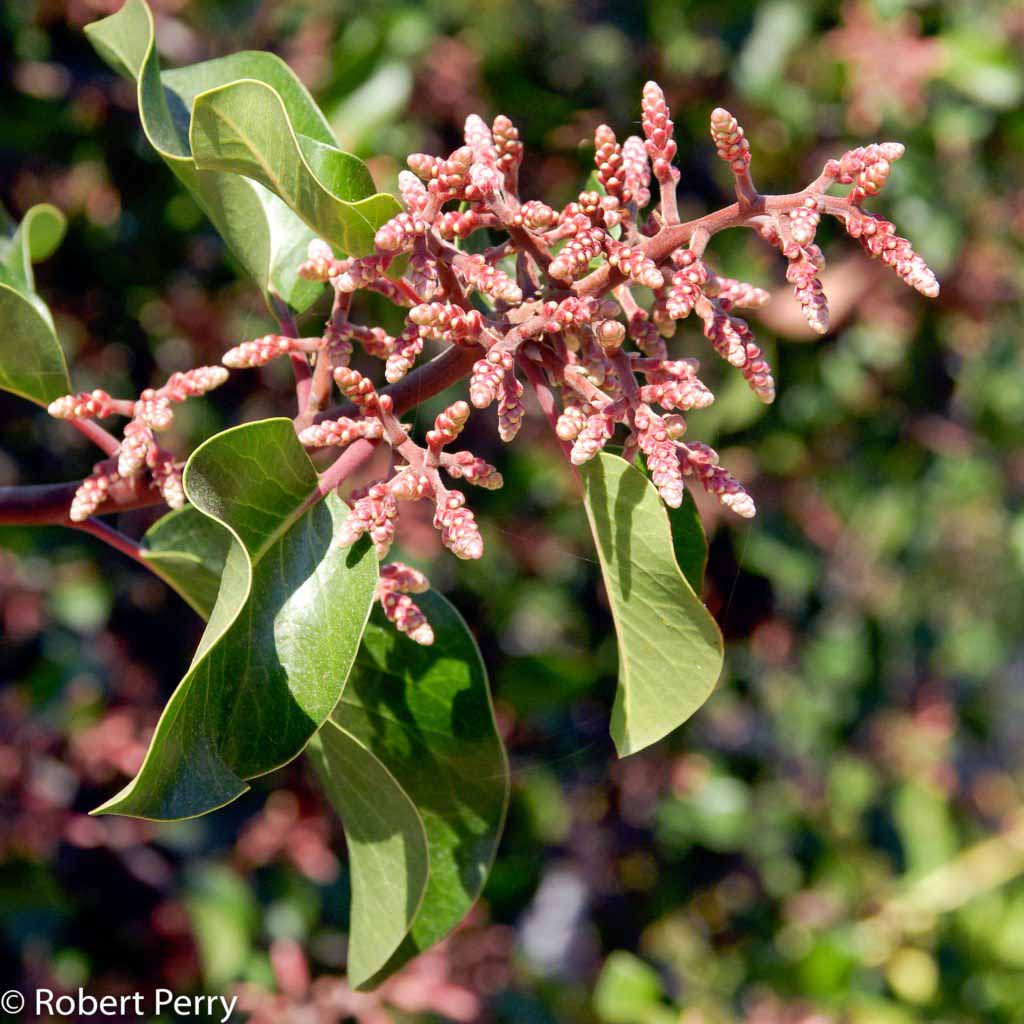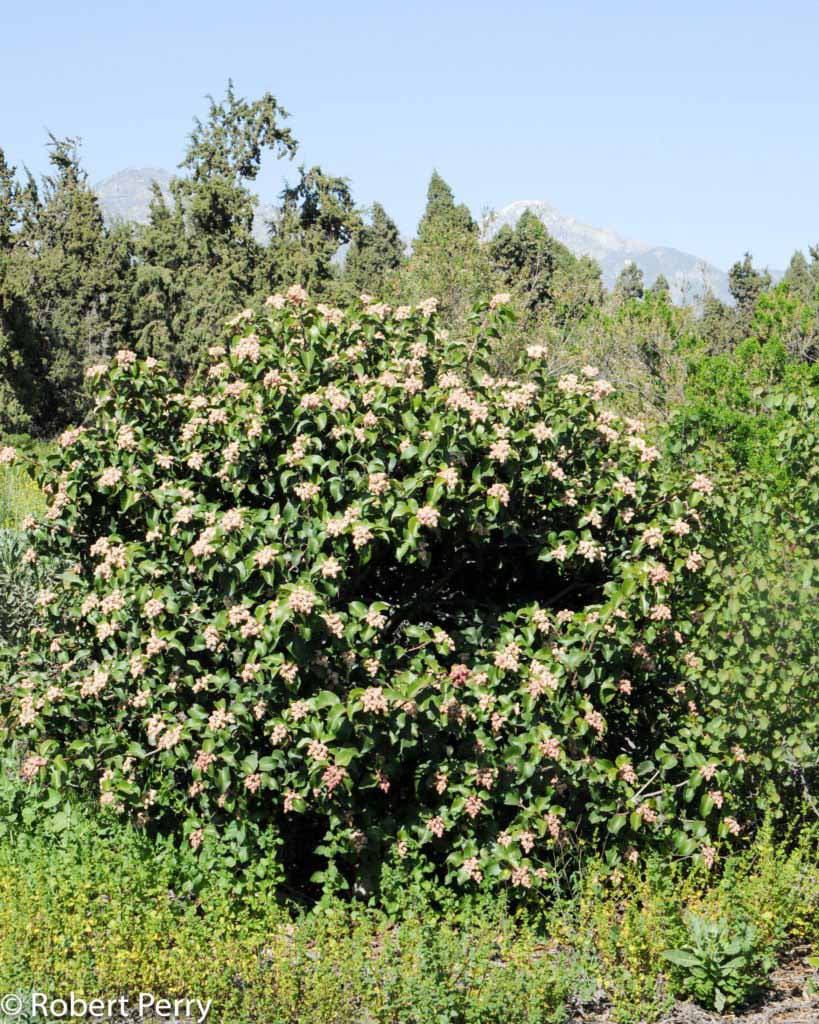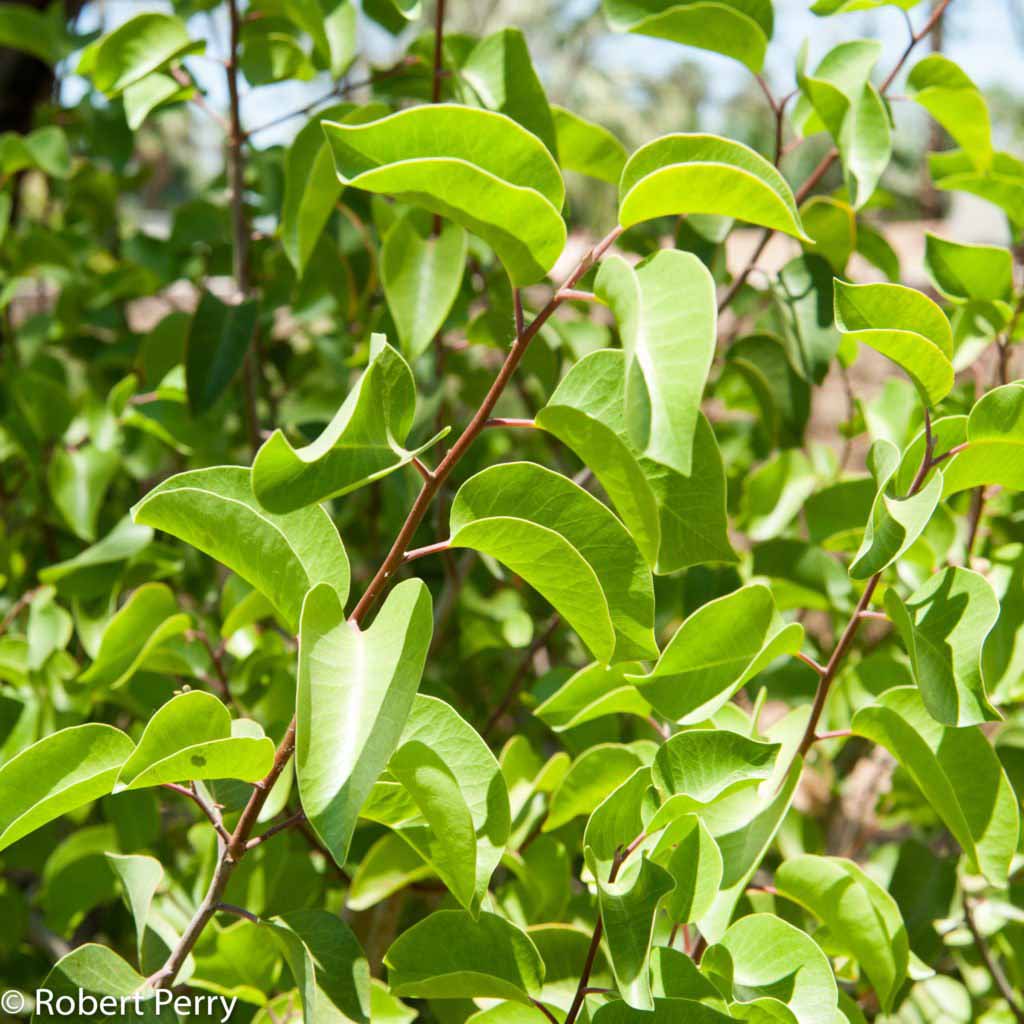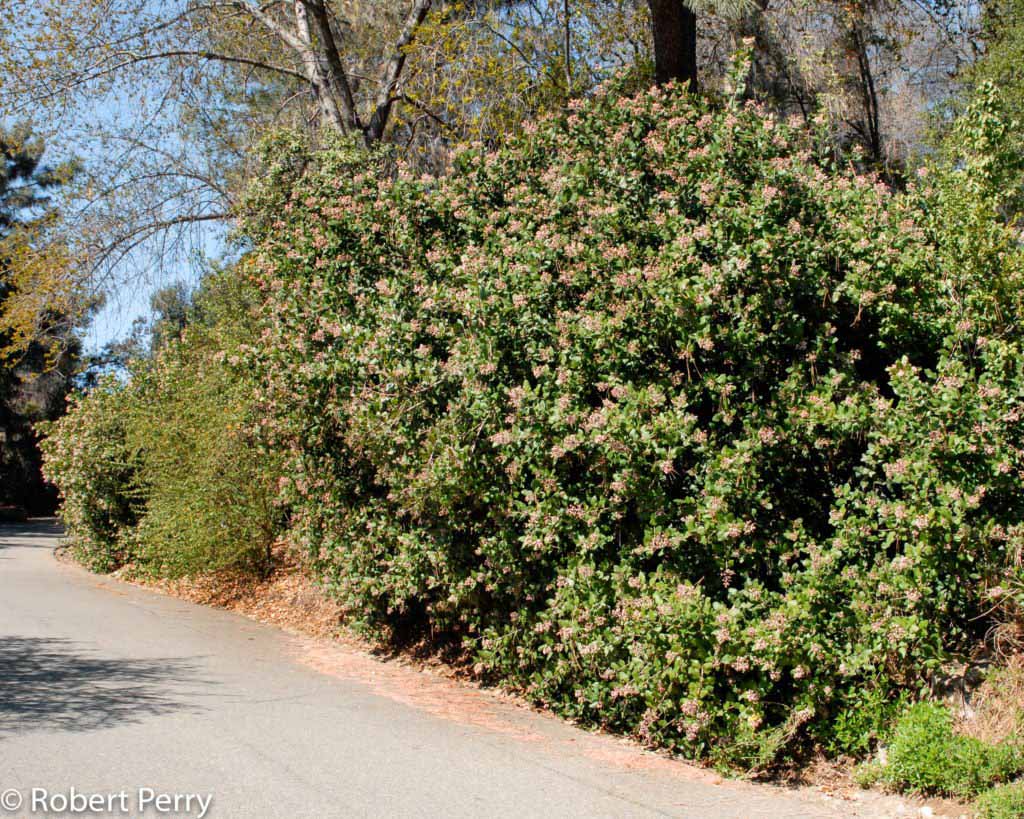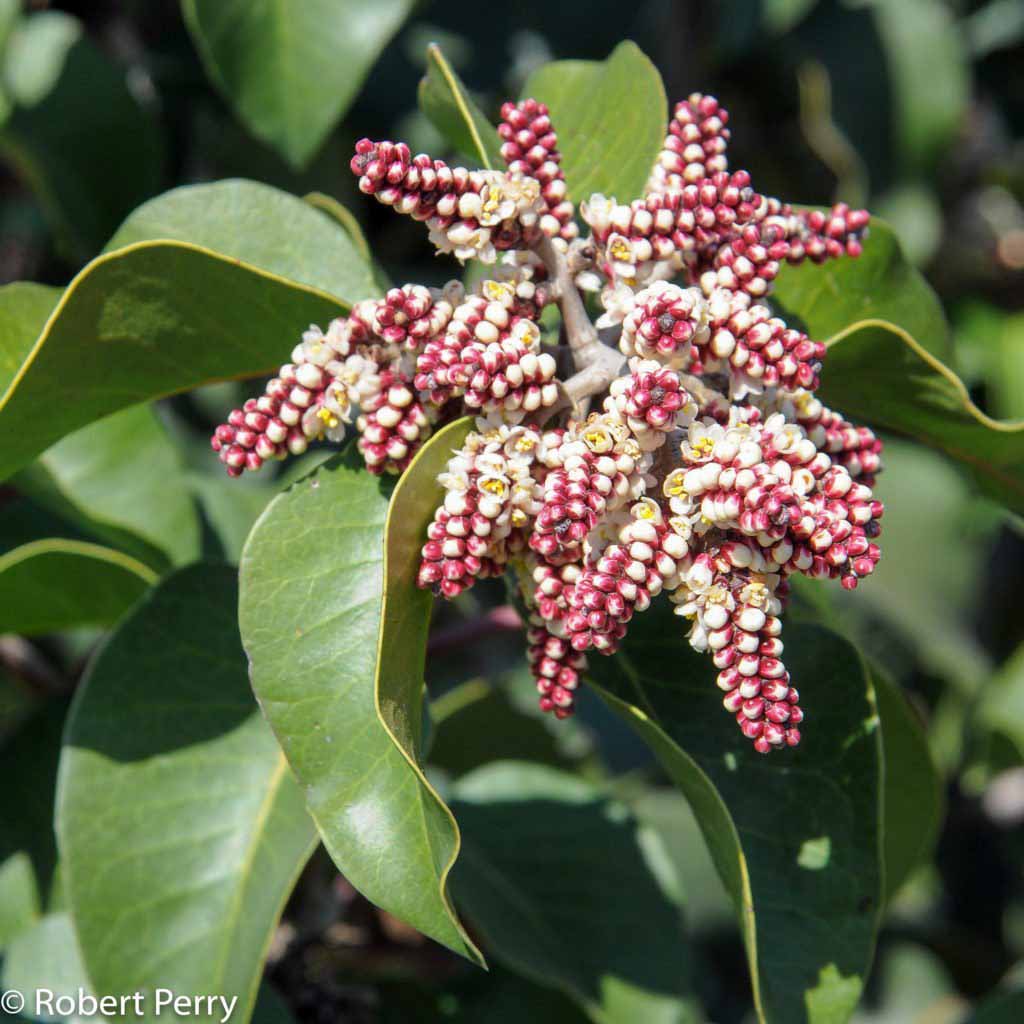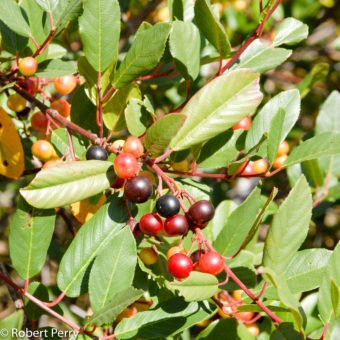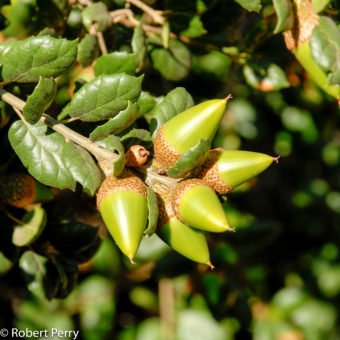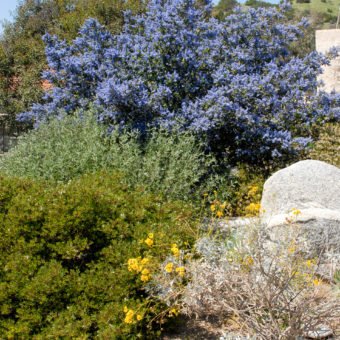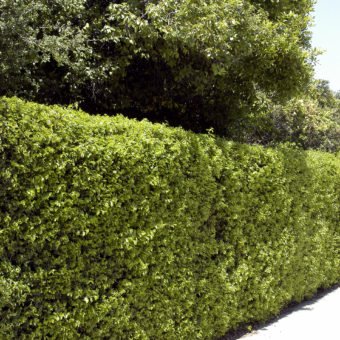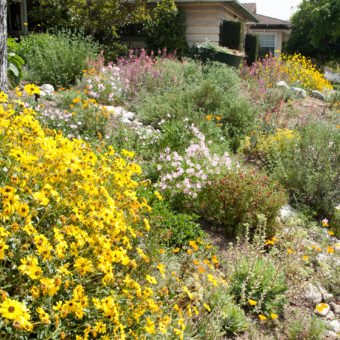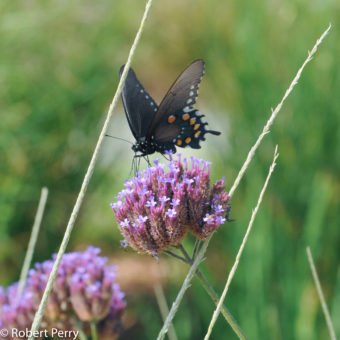Sugar bush thrives in Inland Empire gardens with normal winter rains and monthly summer irrigation. The chart shown below provides a recommended baseline guide to the monthly irrigation schedule and volume of supplemental water needed to maintain healthy growth throughout the average year. It should be noted there are several months indicated by an asterisk (*) when winter rains can provide sufficient moisture and irrigation is not needed. The high and low range of moisture indicates it can grow with varying amounts of water; more moisture leads to a longer growing season and faster growth.
| |
Jan* |
Feb* |
Mar* |
Apr |
May |
Jun |
Jul |
Aug |
Sep |
Oct |
Nov* |
Dec* |
| Runs per Month |
0x to 2x |
0x to 2x |
0x to 2x |
1x |
1x |
1x |
1x |
1x |
1x |
1x |
0x to 2x |
0x to 2x |
| Inches per Run |
1″ |
1″ |
1″ |
1″ |
1″ |
1″ |
1″ |
1″ |
1″ |
1″ |
1″ |
1″ |
| |
| Inches per Month |
0″ to 2″ |
0″ to 2″ |
0″ to 2″ |
1″ |
1″ |
1″ |
1″ |
1″ |
1″ |
1″ |
0″ to 2″ |
0″ to 2″ |
Range of supplemental summer water: 7"
Range of supplemental winter water: 0"-10"
| |
0″-2″ |
0″-2″ |
0″-2″ |
1″ |
1″ |
1″ |
1″ |
1″ |
1″ |
1″ |
0″-2″ |
0″-2″ |
| |
Jan* |
Feb* |
Mar* |
Apr |
May |
Jun |
Jul |
Aug |
Sep |
Oct |
Nov* |
Dec* |
For more information on how to use this Irrigation Schedule and Graph, follow this link.
For information how to calculate your irrigation system’s schedule and precipitation rate, please follow this link.
Prune by heading back as much of the new-ish growth as desired and shape to encourage long-term nice form and branching pattern in May (1). Feel free to lightly prune outer branches if shaping is needed in early Fall, but try to reserve any more substantial pruning for late spring (1). Light pinching back over time will encourage denser form. It can even be turned into a formal hedge if desired. Pruning can be used to shape into a small tree or dense hedge. If hedging, remember to taper the hedge, narrower at the top, and wider at the base, so it gets good sunlight access to the entire plant (2). Hedged plants can be cut back two or three times per year. Although it is rare, some people have an allergic reaction to the sap, somewhat like a poison oak rash. Sometimes plants grow very slowly or not much at all after planting, but within a few years begin to grow more rapidly (3)
References